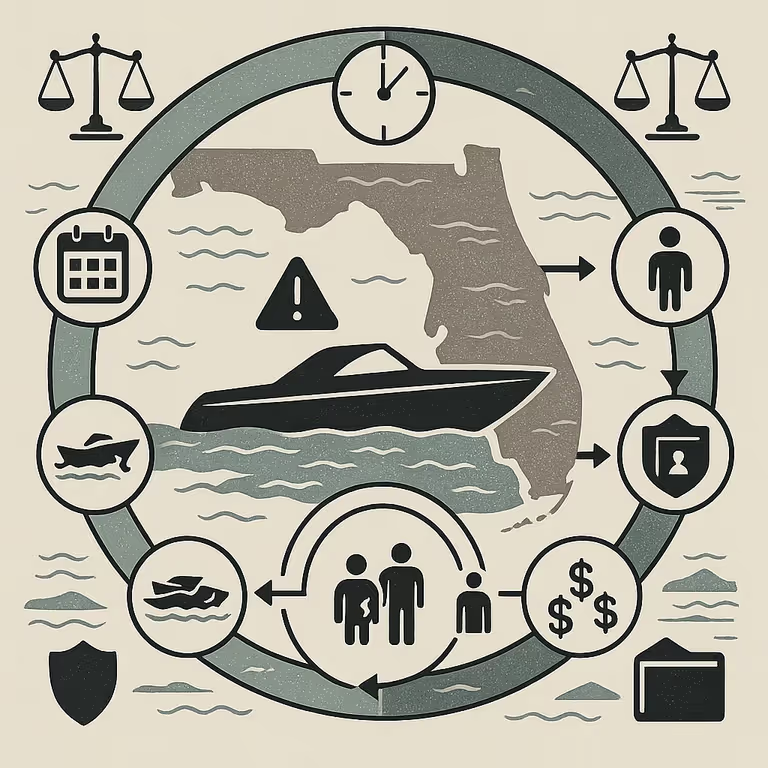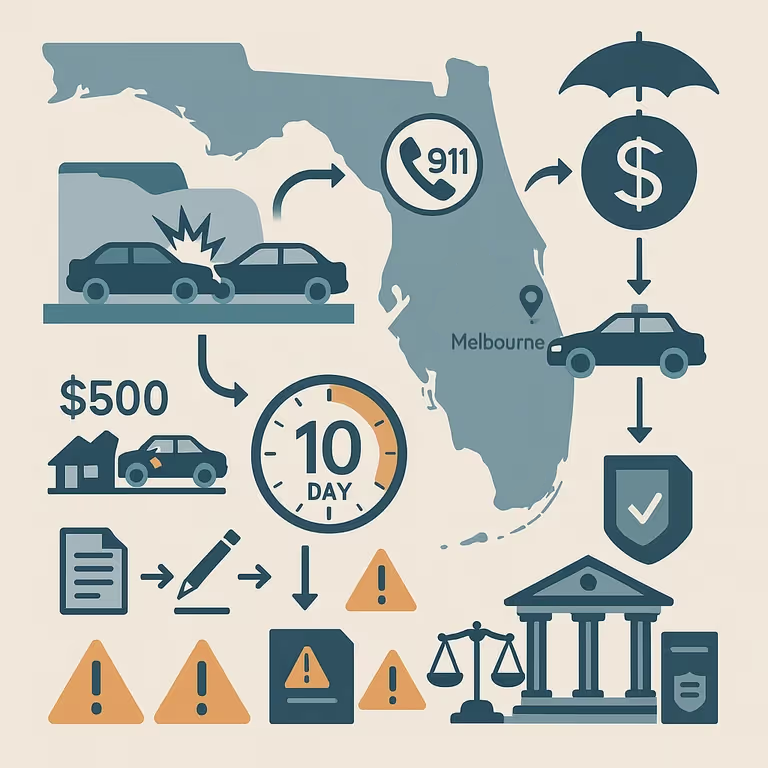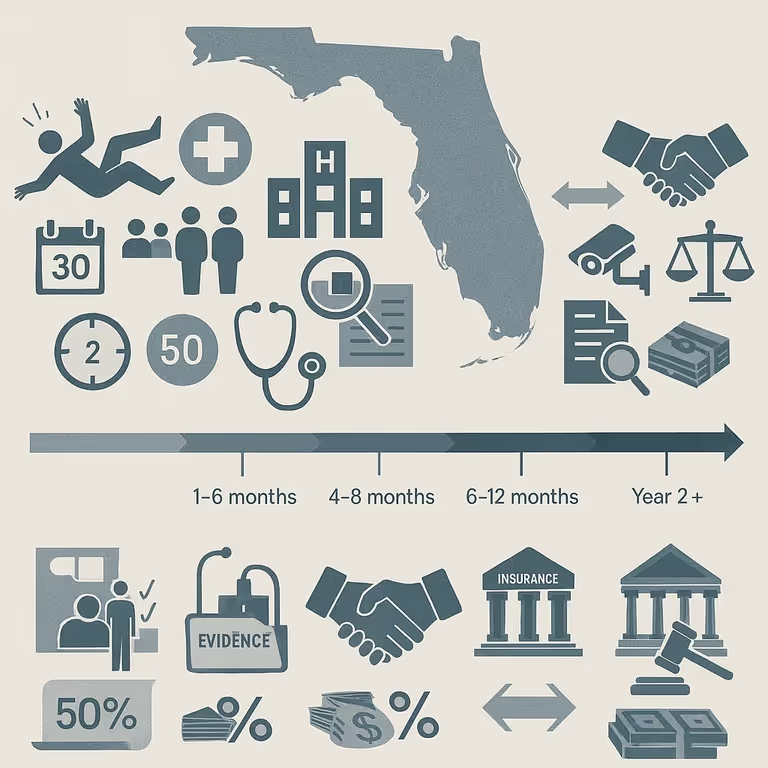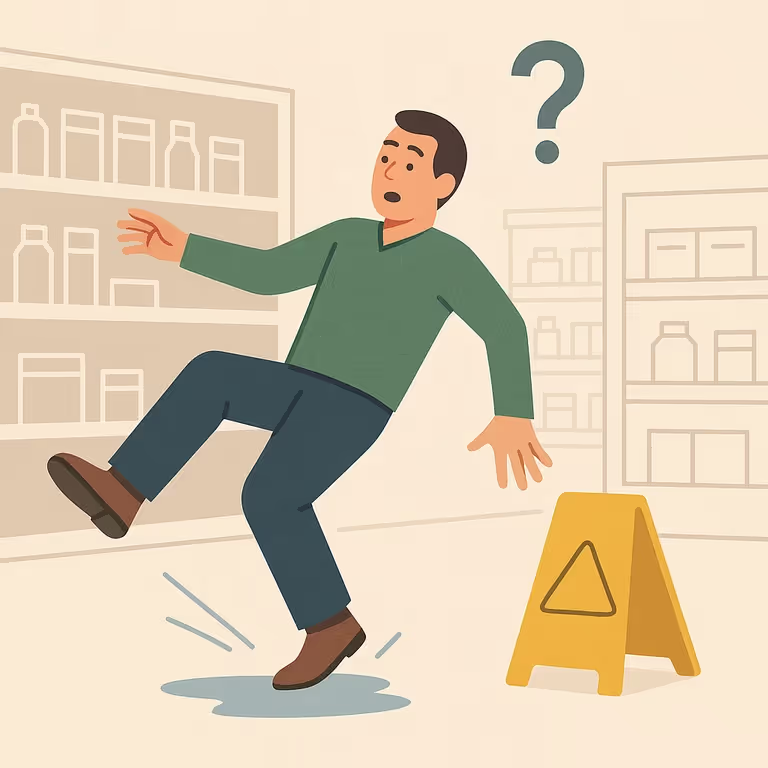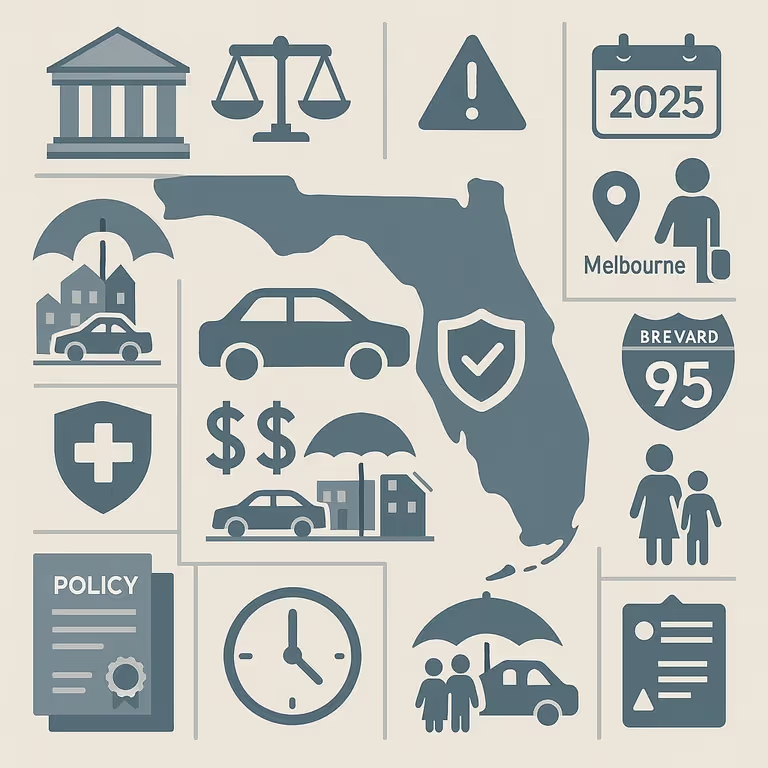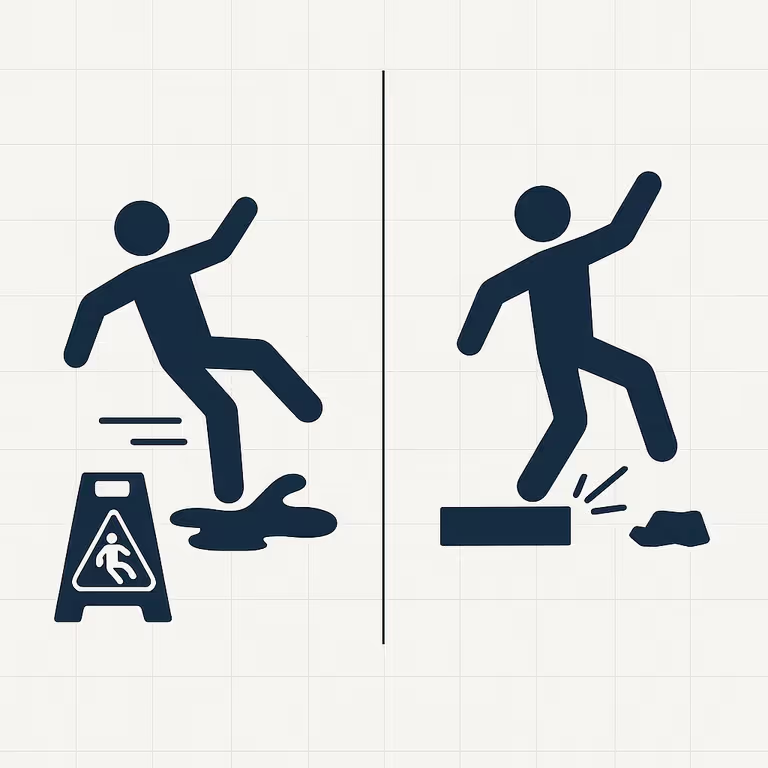Florida High Beam Laws Explained: When to Dim Your Headlights and Legal Consequences
Learn Florida's high beam laws, including 500-foot and 300-foot rules, penalties for violations, and how bright headlights can impact car accident cases.
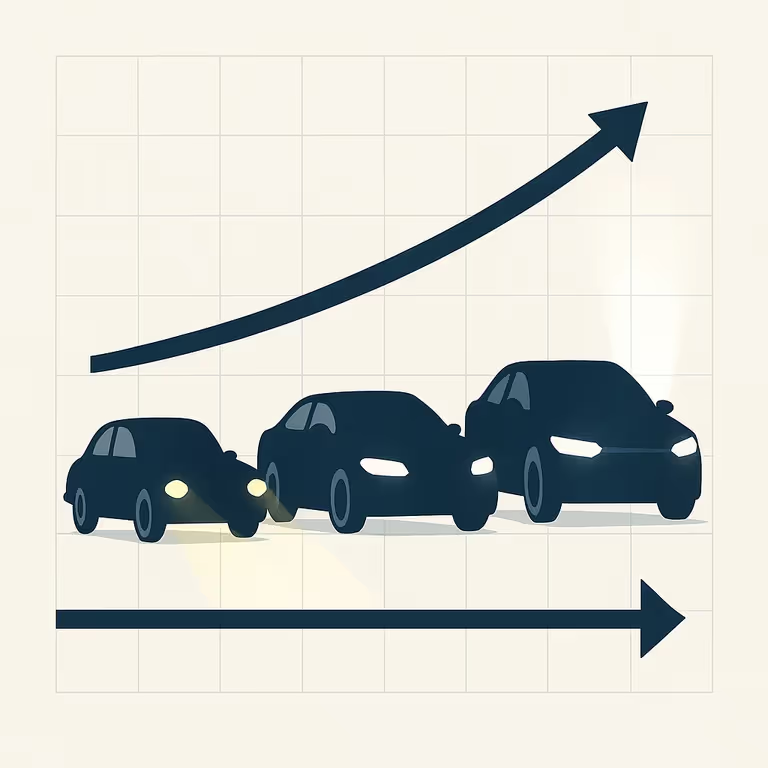
- Florida requires dimming high beams within 500 feet of oncoming traffic and 300 feet when following vehicles.
- High beam violations are moving violations that can result in fines, points, and evidence of negligence in accident cases.
- Modern LED and HID headlights are significantly brighter than traditional lights, creating genuine safety concerns for other drivers.
Worried About Your Injury Case? We'll Review It - Free!
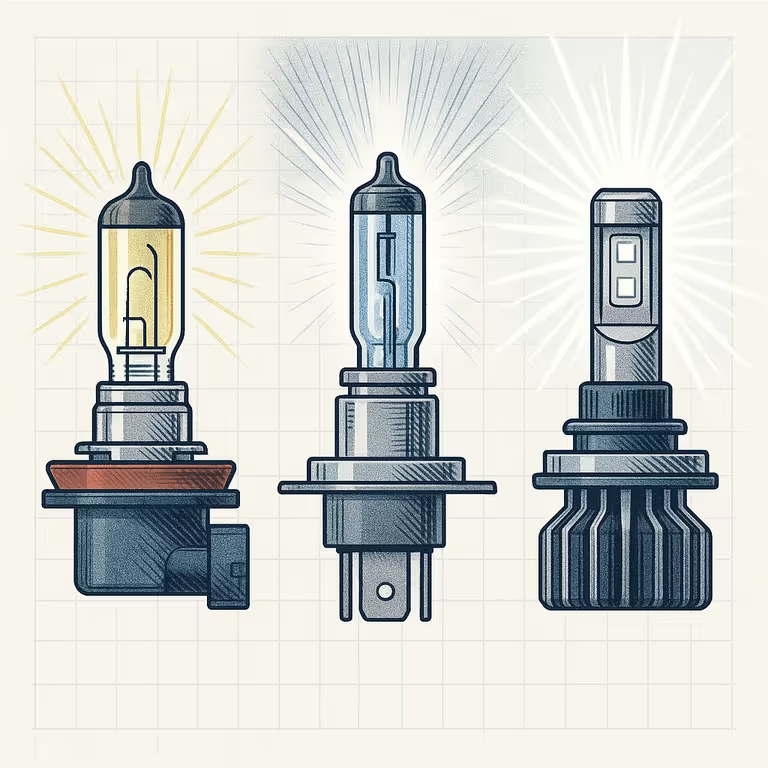

Are Headlights Getting Brighter?
You're driving home from work on a dark stretch of road when suddenly—BAM!—you're hit with what feels like the sun itself blazing through your windshield. "Holy moly!" you think, squinting and gripping the steering wheel tighter. "Are those high beams getting brighter, or is it just me?"
The answer might surprise you: it's not just you, and you're not getting older or more sensitive to light. Modern headlights genuinely are getting brighter, and it's causing real problems for drivers across Florida and beyond. If you've noticed that nighttime driving has become more challenging due to blinding headlights from oncoming traffic or vehicles behind you, you're experiencing a widespread issue that combines rapidly advancing automotive technology with longstanding traffic safety laws.
The shift from traditional halogen bulbs to LED and HID (High Intensity Discharge) lighting has fundamentally changed how bright vehicle headlights can be. While these newer technologies offer better visibility for the drivers using them, they've created an unintended consequence: disability glare that can temporarily blind other motorists and contribute to dangerous driving conditions.
At Douglas R. Beam P.A., we've been representing motor vehicle accident victims in Brevard County since 1988, handling thousands of cases over the decades. While headlight-related issues aren't our primary focus, we understand that visibility problems—including those caused by improper headlight use—can sometimes be contributing factors in the traffic accidents we investigate. When multiple elements combine to cause a crash, every detail matters in building a strong case. That's why understanding Florida's high beam laws and your rights on the road is important for every driver.
Whether you're frustrated by being blinded by oncoming traffic or want to make sure you're using your own high beams legally and safely, Florida law provides clear guidelines. More importantly, understanding these laws can help protect you both from citations and from the legal consequences if improper lighting contributes to an accident. Our Melbourne car accident lawyers have seen how seemingly minor traffic violations can become major factors in personal injury cases.
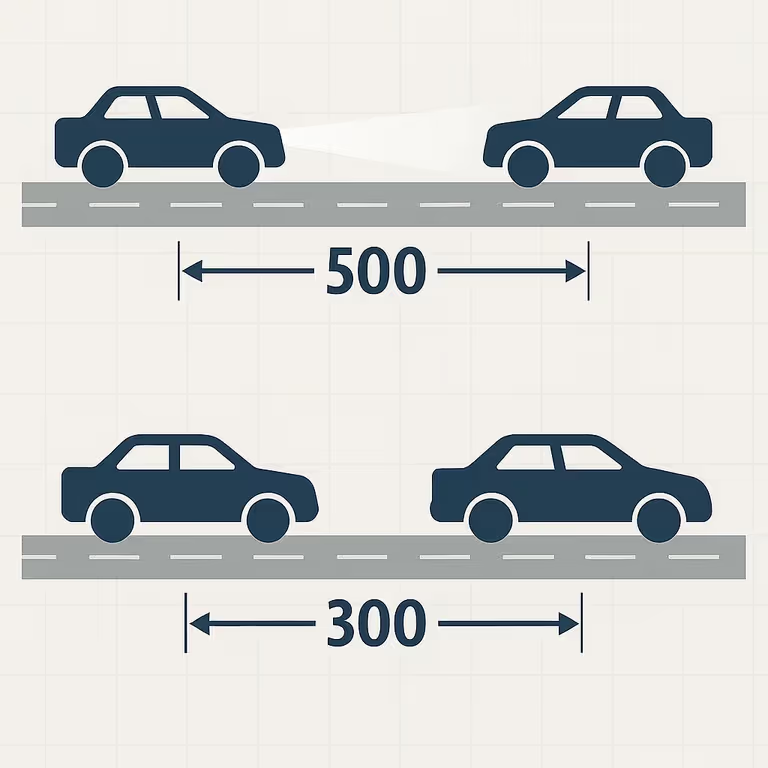
The Science Behind Brighter Headlights: LEDs, HIDs, and the Technology Shift
To understand why headlights seem blindingly bright these days, you need to know about the three main types of automotive lighting technology. For decades, most vehicles used halogen bulbs—those yellowish lights that provided adequate illumination without causing major glare problems. Halogen technology was the standard, and most drivers adapted to its limitations and benefits.
Then came the automotive lighting revolution. HID (High Intensity Discharge) lights entered the mainstream in the 1990s and 2000s, producing a much whiter, more intense light than halogen bulbs. These systems use an electric arc between tungsten electrodes inside a tube filled with xenon gas and metal salts, creating a significantly brighter output.
Most recently, LED (Light Emitting Diode) technology has taken over much of the automotive lighting market. LEDs produce an extremely bright, white light that can be precisely controlled and shaped. While this technology offers excellent visibility for the driver using it, the intensity and color temperature of LED lights can create serious disability glare for other drivers.
Here's the critical issue: disability glare occurs when bright lights temporarily reduce your ability to see. This isn't just discomfort—it's a measurable reduction in visual performance that can last several seconds after exposure to intense light. Research has consistently shown that disability glare can significantly impair driving ability, affecting everything from reaction time to the ability to detect pedestrians and road hazards.
Certain groups of drivers are particularly vulnerable to disability glare. The elderly experience more severe effects due to natural changes in the eye that occur with aging. People with light-colored eyes are also more sensitive to bright lights, as are those with cataracts or other eye conditions. However, even young, healthy drivers with excellent vision can experience temporary blindness when subjected to extremely bright automotive lighting.
What makes this situation particularly challenging is that the same LED and HID technology that creates problems for oncoming drivers genuinely does improve visibility for the vehicle operator. This creates a sort of "lighting arms race" where drivers feel they need brighter lights to compete with the increasingly bright lights around them, further escalating the problem.
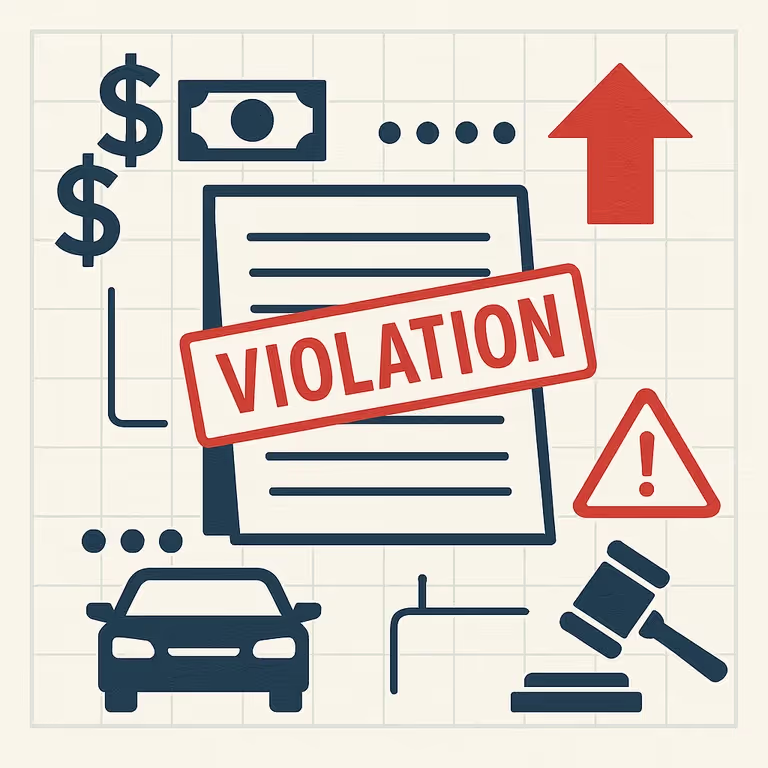
Florida's High Beam Laws: The 500-Foot and 300-Foot Rules You Need to Know
Florida law is very specific about when drivers must dim their headlights, and these rules apply regardless of the type of lighting technology your vehicle uses. The governing statute is Florida Statute 316.238, which regulates the use of multiple-beam road-lighting equipment—commonly known as high beams.
The law establishes two critical distance requirements that every Florida driver should memorize:
The 500-Foot Rule for Oncoming Traffic: You must dim your high beams when you're within 500 feet of an oncoming vehicle. This distance is roughly equivalent to 1.5 city blocks or about the length of a large shopping center parking lot. When you see headlights approaching in the distance, you should switch to low beams well before you can clearly make out the other vehicle's details.
The 300-Foot Rule for Following Traffic: You must use low beams when you're within 300 feet of a vehicle you're following. This is approximately one city block or about the distance from home plate to the outfield fence in a baseball stadium. If you can clearly see the rear of the vehicle ahead of you, you're likely too close to legally use high beams.
Here's what many drivers don't realize: Florida's law doesn't just apply to traditional "high beam" settings. The statute regulates any lighting that can cause disability glare to other drivers. This means that even vehicles with extremely bright LED or HID low beams could potentially violate the law if they're improperly aimed or create excessive glare.
The law requires drivers to use the lower beam of their headlights when approaching or following other vehicles "to avoid glare to other drivers." This language gives law enforcement and courts flexibility to address situations where technically "low" beams are still causing dangerous disability glare.
Understanding these distance requirements isn't just about avoiding a traffic ticket—it's about understanding your legal obligations as a driver and recognizing when other drivers may be violating the law. Our Central Florida motor vehicle accident lawyers have handled numerous cases where understanding the details of traffic laws like these became crucial to establishing fault and liability.
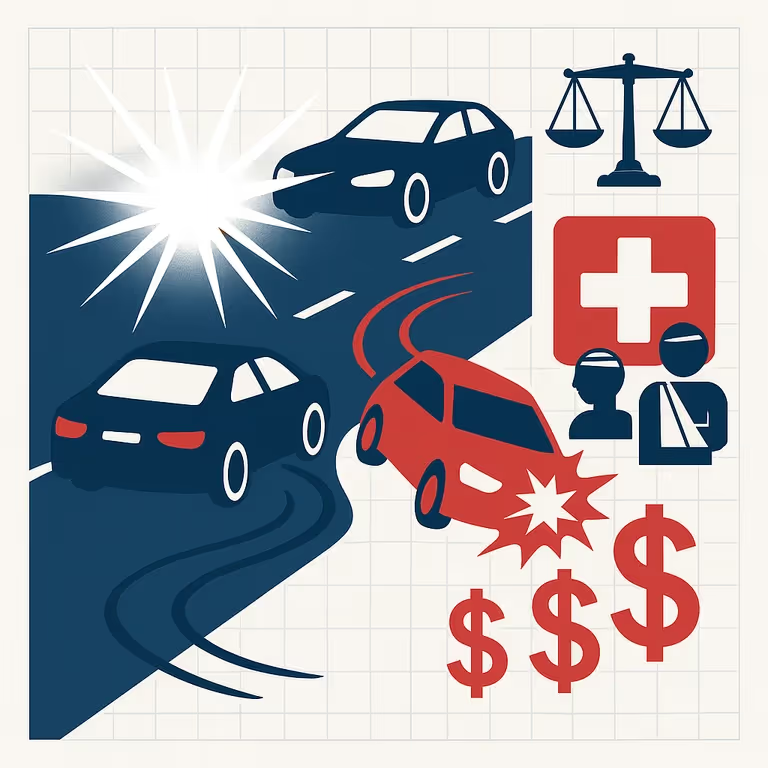
Violations and Penalties: What Happens When You Don't Dim Your Lights
High beam violations in Florida are classified as moving violations, which means they come with both immediate and long-term consequences. The specific citation code for these violations is 316.238, officially described as "HEADLIGHTS - FAIL TO DIM." This isn't just a minor infraction—it's a violation that can affect your driving record and insurance rates.
When cited for improper high beam use, drivers typically face fines that vary by jurisdiction but generally range from $30 to over $200, depending on the circumstances and local court costs. More significantly, the violation usually results in points being added to your driving record. While Florida's point system allows for some violations without major consequences, accumulating points can lead to license suspension, mandatory driving courses, and significantly higher insurance premiums.
Law enforcement officers have discretion in citing high beam violations, and these citations often occur during traffic stops initiated for other reasons. An officer might notice that a driver failed to dim their lights appropriately and add the 316.238 citation to other violations like speeding or following too closely.
However, the real legal consequences of improper high beam use often extend far beyond traffic citations. In personal injury law, traffic violations frequently serve as evidence of negligence. If a driver's failure to dim their high beams contributes to an accident—perhaps by temporarily blinding another driver who then loses control—that violation becomes crucial evidence in determining fault and liability.
This is where understanding the law becomes particularly important for accident victims. Even if the other driver wasn't specifically cited for a headlight violation at the scene, evidence that they were using high beams improperly can still be developed through witness testimony, accident reconstruction, and investigation of the circumstances. Our Brevard County traffic accident lawyers regularly investigate these types of contributing factors when building cases for injured clients.
It's also worth noting that drivers can be liable for the consequences of improper headlight use even without receiving a traffic citation. Police officers can't always determine at an accident scene whether headlight usage was appropriate, but a thorough legal investigation can uncover these details later.
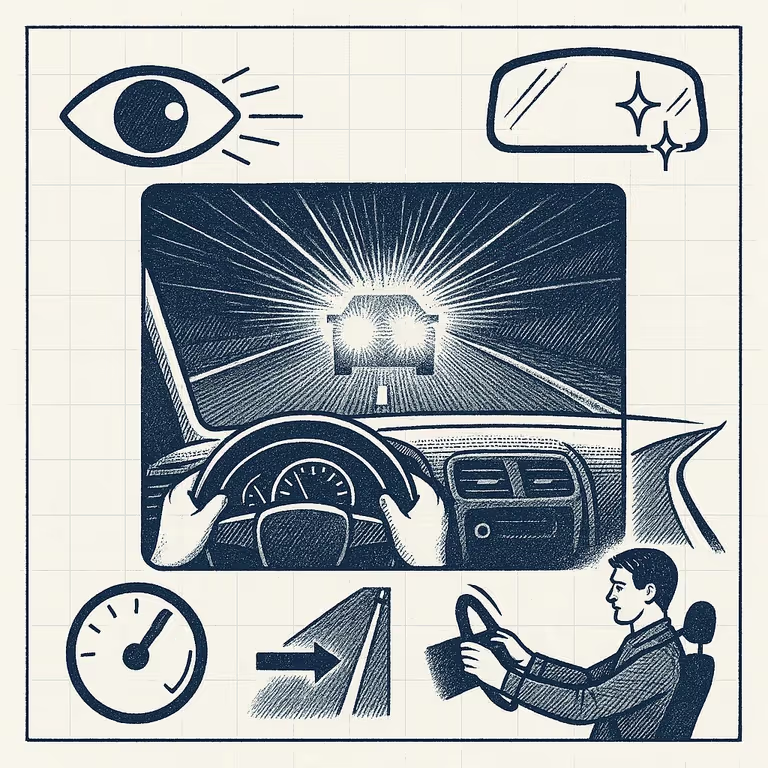
When Bright Headlights Cause Accidents: Your Legal Rights in Florida
Disability glare from improperly used headlights creates genuine safety hazards that can lead to serious accidents. When a driver is temporarily blinded by oncoming high beams, they may lose track of road position, fail to see pedestrians or obstacles, or make dangerous steering corrections. These scenarios can result in rear-end collisions, run-off-road accidents, pedestrian strikes, or head-on crashes.
In Florida personal injury law, establishing negligence requires proving that a driver breached their duty of care to other road users and that this breach caused harm. Improper high beam usage can clearly establish this breach of duty, particularly when it violates Florida Statute 316.238. When a driver fails to dim their lights as required by law and this failure contributes to an accident, they may be liable for all resulting damages.
At Douglas R. Beam P.A., our experience with motor vehicle accident cases spanning nearly four decades has shown us how important it is to investigate every potential contributing factor in a crash. While headlight-related issues aren't our primary specialization, our firm has successfully handled thousands of car accident cases where multiple factors—including visibility problems—combined to cause serious injuries.
Our track record of over $1 billion in verdicts and settlements demonstrates our commitment to thorough case investigation and aggressive representation for accident victims throughout Central Florida. When we take on a motor vehicle accident case, we examine everything from road conditions and vehicle maintenance to traffic law violations and driver behavior patterns.
The key for accident victims is understanding that liability in these cases often involves multiple factors working together. For example, a driver might be following too closely, speeding slightly, and using high beams inappropriately. While each individual factor might seem minor, their combination can create a situation where an accident becomes inevitable.
Documentation is crucial in these cases. If you believe improper headlight use contributed to your accident, it's important to mention this to responding police officers, take photographs if safely possible, and gather witness contact information. Even details that might seem minor—like the time of day, weather conditions, and the type of lighting the other vehicle appeared to have—can become important evidence.
Florida follows modified comparative negligence rules, meaning that even if you bear some responsibility for an accident (less than 50%), you can still recover compensation reduced by your percentage of fault. This makes thorough investigation and skilled representation even more important, as the difference between a good outcome and a poor one often lies in the details. Our Melbourne personal injury lawyers understand how to build strong cases that account for all contributing factors while maximizing recovery for our clients.
Protecting Yourself: Practical Tips for Dealing with Bright Headlights and Safe Driving
The reality is that bright headlights aren't going away—if anything, they're likely to become more common as automotive lighting technology continues advancing. This means every driver needs practical strategies for dealing with disability glare while also understanding how to use their own headlights responsibly and legally.
When you encounter bright oncoming headlights, resist the natural urge to look directly at them or to flash your own high beams in frustration. Instead, focus your eyes on the right edge of the roadway and use the white line or road edge as a guide. This technique helps maintain your night vision while keeping you oriented on the road. Slow down if necessary—there's no shame in reducing speed when visibility is compromised.
Keep your windshield clean, both inside and out. Dirty glass significantly increases glare problems, turning even moderately bright lights into vision-blocking problems. Replace worn wiper blades and consider using an anti-glare treatment on your windshield.
As for your own headlight use, be courteous and legal. Use high beams only when they're genuinely needed and safe—typically on dark, rural roads with no oncoming or followed traffic. When you see approaching headlights in the distance, switch to low beams early rather than waiting until the last moment. Remember the 500-foot rule for oncoming traffic and the 300-foot rule for vehicles you're following.
If your vehicle has particularly bright LED or HID headlights, be extra careful about proper aiming and considerate usage. Just because your lights are technically "low beams" doesn't mean they're not causing problems for other drivers. Consider having your headlight aim checked by a qualified technician, especially if other drivers frequently flash their lights at you.
Frequently Asked Questions
Can I flash my high beams at someone who's blinding me?
Briefly flashing your lights to signal another driver to dim theirs is generally not illegal, but it's not always safe or effective. Focus instead on protecting your own vision and maintaining control of your vehicle. If someone's headlights are creating a genuine safety hazard, the better response is to slow down and perhaps report dangerous driving behavior to authorities after you're safely stopped.
Are LED headlights legal in Florida?
Factory-installed LED headlights are legal in Florida, as are properly installed aftermarket LED systems that meet federal standards. However, many cheap aftermarket LED replacements aren't designed for your vehicle's specific headlight housing and can create excessive glare even on the "low" setting. Improperly installed or aimed LED lights can result in citations and liability issues.
What should I do if bright headlights caused my accident?
Document everything you can remember about the other vehicle's lighting and mention your concerns to responding police officers. Take photos if it's safe to do so, and gather witness contact information. If you've been injured, contact an experienced motor vehicle accident attorney who can properly investigate all contributing factors, including lighting issues.
How can I tell if my own headlights are too bright?
If other drivers frequently flash their lights at you, or if you notice people in oncoming vehicles making obvious steering adjustments, your lights might be improperly aimed or excessively bright. Have your headlight aim checked by a qualified technician, and consider the impact your lighting has on other drivers.
Is there a difference between high beams and just bright low beams?
Florida law focuses on preventing disability glare regardless of the technical setting. Even "low beam" lights can violate state law if they're improperly aimed, excessively bright, or otherwise create dangerous glare for other drivers. The key legal standard is whether the lighting creates a safety hazard, not the specific technical setting.
Key Takeaways
- Modern LED and HID technology has made headlights significantly brighter than traditional halogen lights, creating legitimate safety concerns for other drivers.
- Florida law requires dimming high beams within 500 feet of oncoming traffic and within 300 feet when following another vehicle.
- High beam violations are moving violations that can result in fines, points on your license, and evidence of negligence in accident cases.
- Practical defensive techniques can help protect you from disability glare while maintaining safe vehicle control.
The frustration you feel when blinded by overly bright headlights is real, justified, and shared by drivers throughout Florida and beyond. Modern automotive lighting technology has created genuine safety challenges that existing laws and enforcement mechanisms are still adapting to address. While you can't control what other drivers do with their headlights, you can protect yourself through defensive driving techniques, proper vehicle maintenance, and understanding your legal rights.
If you've been injured in a motor vehicle accident in Melbourne or anywhere in Brevard County, and you believe that improper headlight use contributed to the accident, contact us today.
Not Sure What To Do Next? We Can Help – Fast & Free.
Worried About Your Injury Case?
We'll Review It - Free
Don’t miss an article
Florida law, local insights, and the occasional dog pic.
Delivered straight to your inbox.
More articles
Browse all articlesFree Case Review
Get a complimentary review of your case

.webp)

